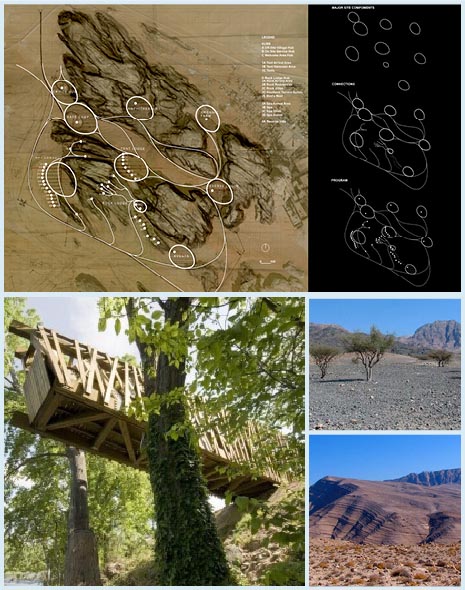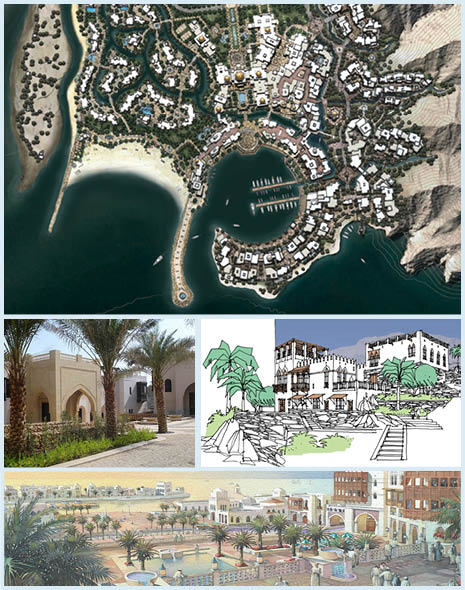

Olde Towne
Village of Southampton
Olde Towne is a 50 acre site in the Village of Southampton, transformed from an open field to a series of landscapes defined by London Plane trees allées, wildflower meadows, dense hedgerows, a nature preserve and a central green, rooted in the natural character and cultural and historical context of the Hamptons. The seven 4-acre estate lots are defined as private enclosures which will be developed in accordance with carefully constructed Design Guidelines to ensure that each new layer of development stays true to the larger vision.
All aspects of the project – the architectural and landscape vision and narrative, the master plan, detailed landscape and architectural studies, visual studies for the Environmental Impact Statement, a large tree mobilization plan, site furnishings, graphics, branding and marketing, maintenance protocols, and entitlement documentation were developed at Hart Howerton in close collaboration with the owner and project consultants.
Project completed while an associate at Hart Howerton
Village of Southampton
Olde Towne is a 50 acre site in the Village of Southampton, transformed from an open field to a series of landscapes defined by London Plane trees allées, wildflower meadows, dense hedgerows, a nature preserve and a central green, rooted in the natural character and cultural and historical context of the Hamptons. The seven 4-acre estate lots are defined as private enclosures which will be developed in accordance with carefully constructed Design Guidelines to ensure that each new layer of development stays true to the larger vision.
All aspects of the project – the architectural and landscape vision and narrative, the master plan, detailed landscape and architectural studies, visual studies for the Environmental Impact Statement, a large tree mobilization plan, site furnishings, graphics, branding and marketing, maintenance protocols, and entitlement documentation were developed at Hart Howerton in close collaboration with the owner and project consultants.
Project completed while an associate at Hart Howerton
Cacique Costa Rica
Guanacaste Province,
Costa Rica
Cacique is a proposed zero-carbon, integrated resort community situated on 650 acres of peninsula and pasture lands in the Guanacaste region of northwest Costa Rica. Its extreme topography and location in a tropical dry forest, a rare and highly bio-diverse ecoregion, give it distinctive qualities of dramatic vistas, spectacular seasonal variety and challenging site conditions.
Key among the site development goals was a large scale, long term restoration plan for the tropical dry forest ecosystem.
Landscape Design Principles
Guanacaste Province,
Costa Rica
Cacique is a proposed zero-carbon, integrated resort community situated on 650 acres of peninsula and pasture lands in the Guanacaste region of northwest Costa Rica. Its extreme topography and location in a tropical dry forest, a rare and highly bio-diverse ecoregion, give it distinctive qualities of dramatic vistas, spectacular seasonal variety and challenging site conditions.
Key among the site development goals was a large scale, long term restoration plan for the tropical dry forest ecosystem.
Landscape Design Principles
- The tropical dry forest will be a composition of connected habitats and bio-rich places, into which all other elements are set.
- Celebrate rain events with sculptural channels and rain gardens, etc., exploiting the topography to create dramatic displays of water movement within natural patterns.
- All development is subordinate to the landscape, expressed through simple, local materials and vernacular forms.
- All resources are maximized: renewable materials, site-wide water balance, carbon neutral development.
Najwa
Wadi Rum, Jordan
The landscape design echoes the Wadi Rum ecosystem tracing the wadis in large, sweeping corridors of indigenous plant communities favored by endangered and vulnerable species such as the ibex and oryx as well as livestock tended by the Bedouins. The introduced, episodic gardens are harmonious with the movements of sand, rock forms, wind, water, animals, local tribes, and air. These gardens, some in Chahar-bagh patterns, heighten selected aspects of the region’s Hammada and Sand Dune biomes, allowing immersion and focus on the distinctive Wadi Rum landscape. They include
Wadi Rum, Jordan
The landscape design echoes the Wadi Rum ecosystem tracing the wadis in large, sweeping corridors of indigenous plant communities favored by endangered and vulnerable species such as the ibex and oryx as well as livestock tended by the Bedouins. The introduced, episodic gardens are harmonious with the movements of sand, rock forms, wind, water, animals, local tribes, and air. These gardens, some in Chahar-bagh patterns, heighten selected aspects of the region’s Hammada and Sand Dune biomes, allowing immersion and focus on the distinctive Wadi Rum landscape. They include
- Mountain top Bird and Animal Sanctuaries: Fragile habitat that prohibits human intrusion but permits up-close observation
- Native Regeneration Gardens: biological “hotspots” acting as genetic source pools
- Water Channel Gardens – serene seating areas at the junctures of existing drainages, with rills and shallow pools opportunistically capturing run-off
- Agriculture: Terraced crops and groves at grey water sites
Salam Yiti Resort
Oman
The Salem Yiti Resort is located south of Muscat, Oman, where mountainous site topography provides spectacular views over unspoiled desert and the waters of the Indian Ocean. Designed with reference to vernacular building types, it is intended to become a world class resort. Total land area of 3.5 million square meters includes 2 kilometers of beach frontage, striated limestone mountains, and meandering desert wadis. A large rock formation rising just offshore from the seabed of the wadi delta has become the signature image of the resort, and marine engineering strategies have been developed to preserve it from erosion. Located at the extreme northern end of the beachfront, existing nesting grounds for Hawsksbill Turtles will be preserved and protected from intrusion. Sustainable infrastructure will include district cooling facilities, and catchment structures to capture infrequent rainfall and direct it toward traditional falaj channels and into cisterns.
Gregory Etter, AIA served as Middle East regional project manager with TRO | JungBrannen during the conceptual design and development of this work.
LEED Certification, U.S. Green Building Council
Oman
The Salem Yiti Resort is located south of Muscat, Oman, where mountainous site topography provides spectacular views over unspoiled desert and the waters of the Indian Ocean. Designed with reference to vernacular building types, it is intended to become a world class resort. Total land area of 3.5 million square meters includes 2 kilometers of beach frontage, striated limestone mountains, and meandering desert wadis. A large rock formation rising just offshore from the seabed of the wadi delta has become the signature image of the resort, and marine engineering strategies have been developed to preserve it from erosion. Located at the extreme northern end of the beachfront, existing nesting grounds for Hawsksbill Turtles will be preserved and protected from intrusion. Sustainable infrastructure will include district cooling facilities, and catchment structures to capture infrequent rainfall and direct it toward traditional falaj channels and into cisterns.
Gregory Etter, AIA served as Middle East regional project manager with TRO | JungBrannen during the conceptual design and development of this work.
LEED Certification, U.S. Green Building Council
King Abdullah City for Atomoic and Renewable Energy
Riyadh, Saudi Arabia
The newly conceived King Abdullah City for Atomic and Renewable Energy (KACARE) is dedicated to Research and Development of sustainable and energy efficient technologies. Living and work environments are interwoven within the urban fabric, and the city and its immediate environs serve as a laboratory for rain and desert condensation conservation, as well as a model for the use of treated waste water to regenerate the growth of native flora in the desert wadis. Concentrated Solar Power (CSP) arrays are integrated among experimental agricultural plots and a “smart grid” superstructure allows for the efficient distribution and maintenance of power and information, and also serves as the armature for passive shading and evaporative cooling devices.
Gregory Etter, AIA served as senior project manager with KOETTER | KIM & ASSOCIATES during the design development of this Master Plan.
Proposed for LEED Certification, U.S. Green Building Council
Riyadh, Saudi Arabia
The newly conceived King Abdullah City for Atomic and Renewable Energy (KACARE) is dedicated to Research and Development of sustainable and energy efficient technologies. Living and work environments are interwoven within the urban fabric, and the city and its immediate environs serve as a laboratory for rain and desert condensation conservation, as well as a model for the use of treated waste water to regenerate the growth of native flora in the desert wadis. Concentrated Solar Power (CSP) arrays are integrated among experimental agricultural plots and a “smart grid” superstructure allows for the efficient distribution and maintenance of power and information, and also serves as the armature for passive shading and evaporative cooling devices.
Gregory Etter, AIA served as senior project manager with KOETTER | KIM & ASSOCIATES during the design development of this Master Plan.
Proposed for LEED Certification, U.S. Green Building Council

Olde Towne

Cacique Costa Rica
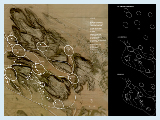
Najwa

Salem Yiti Resort
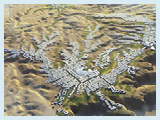
King Abdullah City for Atomoic and Renewable Energy
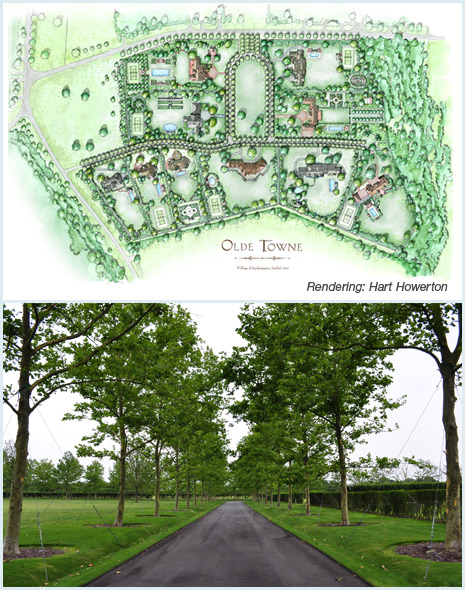
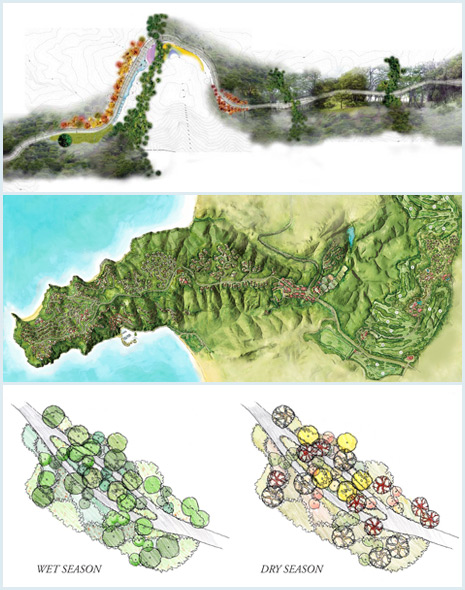
All renderings: Hart Howerton
